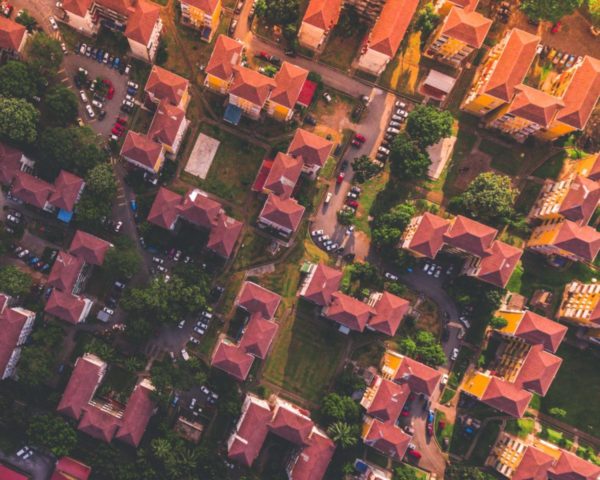Explainer: The homelessness services system and demand for services
March 28 2019
A quick explainer on the homelessness services system and demand for services.
For people outside the sector how the homelessness system works can seem somewhat nebulous at times. So to clarify, Launch Housing’s very own Deb Batterham explores the system in this article and delves into the challenges we are facing as a sector.
Guest blog by Launch Housing researcher Deb Batterham.
About the homelessness services system
What is the homelessness service system? And how does it work to support people in a housing crisis? Many people experience life events that may place them at risk of homelessness and they’re often some of the most vulnerable and marginalised in our society.
In Australia, Federal, State and territory governments jointly fund not-for-profit community agencies (including faith-based organisations) to provide services for people experiencing or at-risk of homelessness.
Some agencies work with a specific target group, such as young people aged 15-24, or women and children escaping family violence, while others provide services for anyone experiencing homelessness or at-risk of homelessness.
All these agencies are funded under the National Housing and Homelessness Agreement (NHHA). This joint funding agreement requires states and territories to match the Federal Government funding.
Specialist Homelessness Services (SHS) is an umbrella term for a range of agencies that provide support to people experiencing or at-risk of homelessness and receive funding under the NHHA.
There are several streams of funding within Victoria. Key among them are funding for Specialist Homelessness Services (SHS) and funding for housing providers and housing associations to provide housing only.
The Housing Establishment Fund (HEF), administered by SHS, is used to assist people to begin a tenancy, or to assist with paying for emergency accommodation. These resources are managed within broad Local Area Service Networks or LASNs which are based on the Department of Health and Human Services service regions.
Accessing Homelessness Services
In Victoria, like most other states and territories, we have centralised access points. The system is referred to as ‘Opening Doors’.
It was designed to make it easier to access homeless services and prevent people having to go from agency to agency, and repeatedly tell their story before they received assistance.
With Opening Doors people can call a state-wide number (1800 825 955) and be directed to their nearest SHS access point to receive assistance. However, since there are many people who require assistance at any given time, there are often wait times to access both support and housing. This means that some people resort to contacting multiple services directly anyway.
Types of services provided by Specialist Homelessness Services
SHS provide assistance to access short term or long term housing, help people at-risk to remain housed, and also provide a broad range of general support services, including:
- Advice and information regarding housing options
- Advocacy and liaison
- Assistance to access income support payments
- Assistance with applications for public and community housing
- Assistance with rent arrears or emergency accommodation
- Meals
- Laundry or shower services
- Material aid
- Case management
- Assertive outreach
- Support around sexual assault or family violence
- Referral to specialist services as required (such as health, mental health services, drug and alcohol, legal)
- Court support
Some agencies are co-located with other specialist services such as a community health service or youth drop in service.
Temporary or stop gap housing is provided by registered housing providers or housing associations who post vacancies on a centralised register usually within a LASN.
This housing includes transitional housing, crisis accommodation (which includes youth and women’s refuges, or general crisis accommodation like Launch Housing’s Southbank services), or emergency accommodation which is paid for by a homelessness service but provided in the private sector such as cheap motels, rooming or boarding houses.
For longer term housing solutions SHS will assist people to access the private rental market, and apply for community and public housing.
There are some permanent supportive housing options such as Launch Housing’s Common Ground in Elizabeth Street, and temporary supported housing such as Launch Housing’s Education First Youth Foyers.
Demand for Services
Any agency that receives funding for Specialist Homelessness Services (SHS) must participate in a data collection that surveys how many people they support, their basic demographics, the services needed and provided, and the housing outcome achieved.
In the most recent financial year 288,795 people received assistance from SHS nationally. Between July 2011-17, it is estimated that 940,000 people received assistance from SHS across Australia.
The Australian Institute of Health and Welfare (AIHW) reported an estimated 62,000 people were supported daily in 2017-18. However, demand often outstrips the capacity of services, and some people are turned away without receiving assistance.
Sometimes this is because a person has presented to a service that they are not eligible for – i.e. a person aged 30 requesting assistance from a youth only service.
However, frequently people require either short or long term accommodation (74% of cases) and no accommodation is available.
While the number of people assisted by SHS has increased over time, 23% of all requests for assistance were turned away without receiving assistance in 2017-18. Of these unassisted requests, 47% were later assisted by a homeless service.
In addition, findings from the General Social Survey conducted by the ABS, suggests that the majority of people who had experienced homelessness in the past ten years (67%) did not approach services for assistance during their most recent episode of homelessness.
This suggests that there is significant latent or unexpressed demand for homelessness services, or at least low-cost rental housing, beyond that captured by the Specialist Homelessness Services Collection.
To address homelessness we must increase the supply of affordable housing stock to those on the lowest incomes, and this is achievable with support and commitment from governments.
If we want to address the high demand (expressed and unexpressed) for homelessness services and low-cost rental housing, then we must look at broader structural factors which precipitate homelessness. Such as the very low incomes of people in receipt of income support payments, and the wages and conditions of those working in low-paid insecure jobs.
The lack of affordable housing and adequate resources is a tough reality that Launch Housing and other agencies in the sector face daily. Still we know homelessness is solvable, and we can end it together.
If you like to learn more about homelessness and the resources used to create this articles you can find more information on the below outlined websites and reports:
AIHW 2018, Specialist homelessness services annual report 2016–17, Cat. no: WEB 217
AIHW, 2019, Specialist homelessness services annual report 2017–18, Cat. no: HOU 299
All annual reports for specialist homeless services are publicly available for free here: https://www.aihw.gov.au/reports-data/health-welfare-services/homelessness-services/reports
ABS, 2015, General Social Survey, 2014, Summary results. Available at: https://www.abs.gov.au/ausstats/[email protected]/mf/4159.0#Anchor5
National Housing and Homelessness Agreement – For a copy of the actual agreement and separate state and territory agreements see here: http://www.federalfinancialrelations.gov.au/content/housing_homelessness_agreement.aspx



